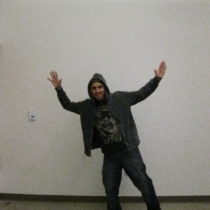Landscape Architecture for Landscape Architects › Forums › GENERAL DISCUSSION › Is it just me… or do we need to rethink our illustrative quality of figures in the landscape?
- This topic has 1 reply, 17 voices, and was last updated 13 years ago by
 Ben Yahr.
Ben Yahr.
-
AuthorPosts
-
July 17, 2011 at 6:48 pm #173340
 David BarbarashParticipant
David BarbarashParticipantMy research line here at Purdue will be of interest to you then. I hope my work will be of direct help to design firms since I include cost/benefit analysis of each project in my write-ups.
My masters thesis looked at levels of detail in still images generated from a 3D model – and the time (and cost) it took to create them. I’ll be looking into user-guided 3D designs next (basically, drop a fully realized 3D model into a video game engine; probably the Unreal engine at this point, and see how effective it is to let people explore it themselves as opposed to the designer generated stills and fly-throughs).
Other schools are doing what I would consider “solid” research as well. SUNY ESF in New York is looking at willow mass bio-remediation for toxic sites and at urban agriculture. A number of schools are studying green roof ecology and and infrustructure savings (Michigan and Penn State come to mind).
The issue is that the majority of our technical tools are borrowed from other professions (GIS, 3D modeling, CAD, etc.) so the direct creation research has to be borrowed as well. LA’s are a complicated mix of artist, ecologist, and social scientist but first and foremost, students need to learn how to design. Where would you suggest schools spend more time to better “invest in the future”? What areas would then have to be diminished in order to fit these areas in?
July 17, 2011 at 7:56 pm #173339 G. Ryan SmithParticipant
G. Ryan SmithParticipantgo boilers.
that is an excellent question, and i’m afraid my response may be a bit chicken-or-egg-ish. when i received my bachelor’s degree, i felt (correctly or incorrectly) that i was always being steered away from incorporating more science-based and analytical elements into my work. it may have been that the faculty just wasn’t familiar with anything outside of the tried-and-true, it may have been that the research simply didn’t exist so there was nothing to draw upon. for example, for my capstone project i wanted to work with the notion of selective attention – why people pay attention to certain elements and not to others while moving through space. i was essentially blocked from taking that route with the reason being, essentially, ‘well, it’s not going to guide you in your design.’
when i went back to school for my master’s in urban planning, there was a much stronger embrace of research, whether it was in the field of urban planning per se, engineering, social sciences, etc. and the architecture students who were interested in incorporating areas of research, whether it was strictly architectural or drawing from other disciplines, seemed free to do so. but even in the master’s program it seemed that the landscape architecture students were expected to be very narrowly focused… the best way to sum it up seems to be that, for all intents and purposes, the planning and architecture cultures were more ‘open’ to various courses of research and modes of thought, whereas the landscape architects tended to be overly-captious of anything that they weren’t already familiar with.
of course, you could chalk it up to my own personal experience, which may be the case. and don’t get me wrong, i really like landscape architecture and i think that generally the people in it are excellent. about the only problem is just the sort-of narrow-minded, stay-within-the-fold mentality. it may be just a matter of, as a culture, in terms of research, the profession is not really accustomed to how to take the germ of an idea and move it forward. sort of like how clients don’t necessarily respond to a rough in-progress sketch (whereas your colleagues might), they want to see the finished project, so with research i’ve found that LAs tend to want to know the finished product at the outset, as opposed to being able to take a starting point and move it forward.
maybe the start is just to ask more questions…
July 17, 2011 at 8:46 pm #173338 Jason T. RadiceParticipant
Jason T. RadiceParticipantIt is just like any form of art, styles come and go. What is popular now is because of what is taught to be popular, or what is stylistically pleasing at the moment. “Here, buy this book and use it to guide your drawing” says the professor. All of the great artists had ‘clones’ who either apprenticed with their style or copied it to make money. There is also a universality required in some sorts of design. Take for instance the graphic language of site analysis, where the same symbol means the same thing on every plan. Firms also like to keep a particular “style” about them so their work is consistent and somewhat recognizable. It is what clients are used to seeing, so there is no chance to make themselves uncomforatble with the design.
I’ve seen many different styles, from the hand-drawn “whisp” people, to more detailed entourage style done by architectural renderers. to direct tracings of entourage…seventies style clothing and all. The underlying reason for using these is speed and convenience, especially the Leggitt style…its very quick. People are inherently tough to draw in detail, and people dedicated their lives and careers trying to do it well. And franky, we LAs really cannot draw all that well when you out us in context with other artists, which is why we stylize things.
July 17, 2011 at 9:26 pm #173337 G. Ryan SmithParticipant
G. Ryan SmithParticipantthat brings up an interesting point. it may be true that LA’s in general are not the best artists (otherwise they would be artists)… but as a group do we suppress or malign those individuals that might do better in that arena, or suppress possible innovation?
July 17, 2011 at 9:58 pm #173336 Jason T. RadiceParticipant
Jason T. RadiceParticipantI don’t think so…if there is somebody who creates a really unique, functional, and pleasing style…it WILL be copied. Not so much with hand anymore, but look at how much of even the computer generated stuff all looks the same.
July 18, 2011 at 10:58 am #173335 Andrew Garulay, RLAParticipant
Andrew Garulay, RLAParticipantWhy worry about what other LAs do? If you think it will be a benefit, do it. Anytime that you see a “weakness” in the profession which you do not have it is an advantage to you.
I honestly am amazed by the many perceived obstacles to success people can find because someone else is not doing something that they can do. This is like a football player who can run twice as fast as everyone else being upset that no one else can catch him. Take the ball and run with it and leave everyone else chasing you down the field.
If you have a market advantage then it is up to you to use it. If that does not work, then is it an advantage?
If I have something that I am doing that works to give me an advantage over others, the last thing that I want to do is lose it whether it is the drawing of people, the choice of fonts, the use of plants, or sales approach.
July 18, 2011 at 1:35 pm #173334 Thomas J. JohnsonParticipant
Thomas J. JohnsonParticipantThe Pitchfork Festival in Chicago had a number of booths with silk-screen artists showing their posters (mostly concert/music). It occurred to me that this style could be applied to landscape architecture. It is clean, bold and expressive. Most posters only had 3-5 colors but they did a lot with those 3-5 colors.
July 18, 2011 at 6:40 pm #173333 Jon QuackenbushParticipant
Jon QuackenbushParticipantAgree with Dave, as I often do. I have my computer plan graphics to the point where they are far more expressive than hand rendered plan graphics that I personally can produce, as I have begun to achieve photo-realism. Markers don’t really look that great for the most part and colored pencils, while awesome, cannot be changed, edited. I have an excellent graphics library which I utilize to create lush environments.
My digital renderings are often done by hand with a pen tablet for the finer work. Colors and individual textures can be tweaked for the printer that is going to be used for the output, and with layer masking I can easily make changes to the rendering as the design evolves. With hand graphics, that is a painful process. I have had renderings that I have had to tweak 15-20 times, which would have been hundreds of hours of hand graphic time that I was able to do in a fraction of that.
Note that I have a fine arts background, so I do love anything hand made. For the way I work and the way my office works, digital graphics suit us best.
July 18, 2011 at 6:55 pm #173332i agree that we need to put more time into figures and maybe some more style but we also mostly designers and they are not meant to be illustrative…Also Jim Leggitt uses alot of traced figures for more illustrations…but it just depends on who is drawing them…It depends on media, expression, style, and so many other things…maybe you could display some figures that you think are redundant and “Leggitt Like” so we can see exactly what we are agreeing and/or disagreeing with? How does that sound?
July 18, 2011 at 7:23 pm #173331 G. Ryan SmithParticipant
G. Ryan SmithParticipanti’ve probably already said too much but i’ll add another two cents in after reading some of the other responses.
i would concur that, as far as coming up with new styles – if you come up with something that sells to clients that’s all the justification you need, really. i think in academia professors might be a tad too conservative, with the noble intention of wanting to make sure that students will land jobs when they leave, but actually school might be the best time to experiment since once you start to work in a firm there is the constant time pressure to produce and experimentation is a major waste of time (and budget).
also, in the end, the most important thing is the design, what goes in the ground. while sketches and renderings have an important function in terms of design communication and marketing, it’s important not to put more emphasis on the rendering than on the physical end design.
July 18, 2011 at 7:30 pm #173330 G. Ryan SmithParticipant
G. Ryan SmithParticipantalright, one more comment. what others have said about landscape architects not being illustrators is absolutely correct. if you’re a full-time illustrator, you have a lot more time to practice, and refine your style. most landscape architects, if they work with graphics and illustrations at all, only do it part time, so in practical terms they need to have a dependable style that they know will work.
so i guess at the end of the day, there’s really no law against developing new styles, and it would make sense for those individuals who specialize in renderings to find new techniques.
July 18, 2011 at 10:07 pm #173329 Juan Antonio LopezParticipant
Juan Antonio LopezParticipantI think that these days, everybody’s digital graphics look exactly the same. They all have the cutout trees, desaturated people and so forth. I think sketches really convey more emotion and add a personal style to a rendering. Let’s face it, by now everybody knows sketchup and photoshop to the point where renderings are boring. It’s time to go back to hand graphics in a new way. Throw out the standards from the 1950s and experiment with analog media instead of digital media. Give clients not just a perspective of the design on a 24×36 board but a piece of artwork they can hang on their walls as part of your design package. Just my thoughts.
July 18, 2011 at 11:37 pm #173328 Jason T. RadiceParticipant
Jason T. RadiceParticipantI think it is kind of ironic how “sketchy”, flat, and unrealistic the recent style of renderings are, especially when using the computer. When I started using the computer all those many years ago, the goal was to get it as REALISTIC and ACCURATE as possible, (you know, photorealistic?) beyond what was capable with hand drawings. I’m not seeing that so much anymore, even though the technology has gotten so great, so cheap, and relatively easy to use.
Go figure (hahaha, see what I did there?)
July 19, 2011 at 12:36 am #173327 David BarbarashParticipant
David BarbarashParticipantAs nice an idea as that sounds, I don’t think it’s feasible in the modern market driven design world. Computers are all about editability and repurposing content from previous works. That is not as easy (cost effective) with analog media.
July 19, 2011 at 12:49 am #173326 G. Ryan SmithParticipant
G. Ryan SmithParticipantyep, thanks. i took a 1-day course with mike lin years ago, helped me out quite a bit, btw.
also… architectural drawing and rendering is sort of an idiom much like 2d drafting is an idiom. it has its own conventions and symbols that are easily understood by both professionals and clients. it’s a commonly understood language if you will.
i’m all for innovation and experimentation, and if something else works i would personally say go for it. but at the same time, there’s a certain realpolitik to it that you might need to be wary of. if i turned in something that looked like a comic book, or a storyboard, some people might think it was neat, but others would say ‘that looks like a comic book!’ (pejoratively) or think it’s just a novelty, thus taking the work less seriously.
so there’s a political and competitive element to your choice of going away from an accepted norm – it may be high quality work, but if it’s not what people are expecting, it may be undermining what you’re trying to do.
-
AuthorPosts
- You must be logged in to reply to this topic.



